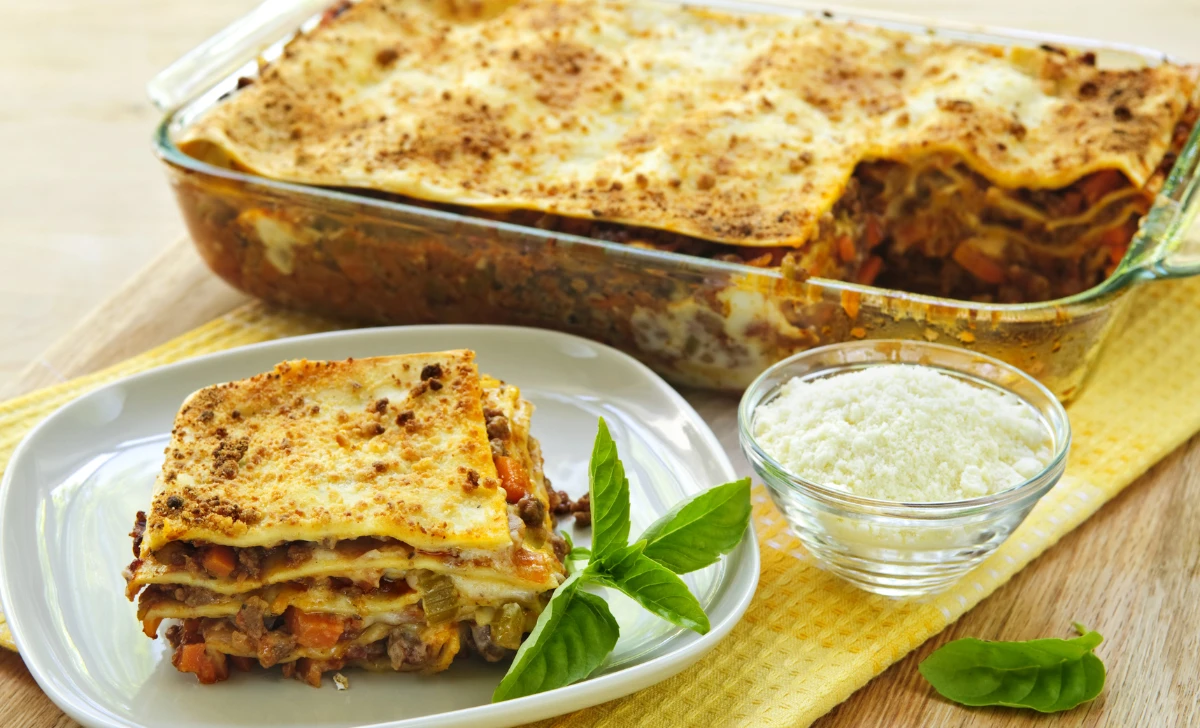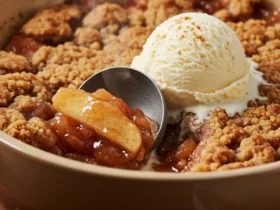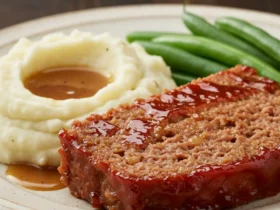Are you in the mood for a hearty and delicious meal? Look no further than this mouthwatering Beef Lasagna recipe. With layers of tender beef, rich tomato sauce, and creamy cheese, this classic Italian dish is sure to satisfy your taste buds. Whether you’re cooking for your family or hosting a dinner party, this recipe is guaranteed to be a crowd-pleaser. So roll up your sleeves and let’s get cooking!
[ez-toc]
History
Beef Lasagna, a beloved and iconic dish, has a rich history that dates back centuries. This hearty Italian delicacy has been enjoyed by people around the world for its comforting flavors and satisfying layers. Let’s dive into the intriguing history of the Beef Lasagna recipe and discover its origins.
1. Ancient Roman Origins
The roots of lasagna can be traced back to ancient Rome, where the precursor to the modern lasagna was born. The Romans, known for their culinary innovations, used layers of pasta and meat in their dishes. However, the early versions of lasagna did not include tomatoes, which are a fundamental ingredient in the Beef Lasagna recipe we know today.
2. Medieval Evolution
During the Middle Ages, lasagna underwent further development as Italian cooks experimented with different ingredients and flavors. It was during this time that tomatoes were introduced to Italy from the New World. The addition of tomatoes brought a vibrant red color and a tangy taste to the traditional lasagna recipe, transforming it into the dish we recognize today.
3. Regional Variations
As lasagna gained popularity across Italy, various regions started putting their own unique twists on the recipe. In the northern regions of Italy, such as Emilia-Romagna, lasagna was often made with a rich béchamel sauce and layers of delicate pasta. In contrast, the southern regions, like Naples, embraced a heartier version, incorporating robust tomato-based meat sauces and an abundance of cheese.
4. Global Spread
With Italian immigrants spreading across the globe, Beef Lasagna became an international sensation. It captured the hearts and taste buds of people from different cultures, who adapted the recipe to suit their own culinary traditions. Today, you can find delicious variations of Beef Lasagna in numerous countries, each with its own distinct flavors and ingredients.
5. Modern Interpretations
In recent years, chefs and home cooks have continued to innovate and elevate the Beef Lasagna recipe. While the basic structure of layering pasta, meat sauce, and cheese remains the same, new ingredients and techniques have been incorporated. Some variations include adding vegetables, different types of meats, or experimenting with unique cheese combinations to create exciting flavors.
Beef Lasagna has undoubtedly come a long way from its humble beginnings in ancient Rome. Its enduring popularity can be attributed to the harmonious combination of flavors, the comforting nature of the dish, and the endless possibilities for personalization. Whether enjoyed in a traditional Italian trattoria or a contemporary kitchen, Beef Lasagna remains a beloved classic that continues to bring joy and satisfaction to countless food lovers around the world.
Time
| Step | Time |
|---|---|
| Preparing ingredients | 20 minutes |
| Making meat sauce | 30 minutes |
| Preparing pasta sheets | 15 minutes |
| Assembling the lasagna | 15 minutes |
| Baking the lasagna | 40-45 minutes |
| Total | Approximately 2 hours |
Please note that the times mentioned above are approximate and may vary depending on individual cooking preferences and equipment used. It’s always a good idea to read the recipe thoroughly and allocate ample time for each step to ensure a successful and enjoyable cooking experience.
Ingredients
| Ingredients | Quantity |
|---|---|
| Ground beef | 250 grams |
| Lasagna noodles | 6 sheets |
| Tomato sauce | 1 ½ cups |
| Onion | 1 medium, finely chopped |
| Garlic cloves | 2 cloves, minced |
| Olive oil | 2 tablespoons |
| Salt | 1 teaspoon |
| Black pepper | ½ teaspoon |
| Dried oregano | 1 teaspoon |
| Dried basil | 1 teaspoon |
| Ricotta cheese | 1 cup |
| Mozzarella cheese | 1 ½ cups, shredded |
| Parmesan cheese | ¼ cup, grated |
| Fresh parsley leaves | For garnish |
Please note that this ingredient list is specifically tailored for a 2-person serving. Adjust the quantities accordingly if you plan to serve more or fewer individuals. Also, feel free to customize the ingredients to suit your taste preferences.
Directions
Step 1: Preparing the Ingredients
Before you begin assembling the lasagna, ensure that all the ingredients are ready. This will make the cooking process smoother and more enjoyable.
Step 2: Making the Meat Sauce
In a large skillet or saucepan, heat the olive oil over medium heat. Add the finely chopped onion and minced garlic cloves. Sauté them until they turn translucent and fragrant.
Add the ground beef to the pan and cook it until it browns, breaking it up with a spoon as it cooks. Make sure the beef is fully cooked and no longer pink.
Pour in the tomato sauce, and season with salt, black pepper, dried oregano, and dried basil. Stir the mixture well to combine all the flavors. Allow the sauce to simmer on low heat for about 15-20 minutes, ensuring it thickens slightly.
Step 3: Preparing the Pasta Sheets
While the meat sauce is simmering, cook the lasagna noodles according to the package instructions. Make sure to cook them al dente, as they will continue to cook in the oven later. Drain the cooked noodles and set them aside.
Step 4: Assembling the Lasagna
Preheat your oven to 180°C (350°F).
In a baking dish, spread a thin layer of the meat sauce on the bottom. Place a layer of cooked lasagna noodles on top, covering the sauce evenly.
Spread a layer of ricotta cheese over the noodles, followed by a layer of shredded mozzarella cheese. Repeat the process by adding another layer of meat sauce, noodles, ricotta cheese, and mozzarella cheese. Continue layering until all the ingredients are used, ending with a layer of meat sauce and a generous sprinkle of grated Parmesan cheese on top.
Step 5: Baking the Lasagna
Cover the baking dish with aluminum foil and place it in the preheated oven. Bake the lasagna for about 25-30 minutes, or until the cheese is melted and bubbly.
Remove the foil and bake for an additional 10-15 minutes, or until the top turns golden brown and slightly crispy.
Step 6: Serving the Beef Lasagna
Once the lasagna is fully cooked, remove it from the oven and let it cool for a few minutes. Garnish with fresh parsley leaves for added freshness and aroma.
Slice the lasagna into portions and serve it hot. Accompany it with a side salad or garlic bread for a complete and satisfying meal.
Enjoy your homemade Beef Lasagna!
Equipment Required
Nutrition Information
| Nutrition Facts | Amount per Serving |
|---|---|
| Serving Size | 1 portion |
| Calories | 450 calories |
| Total Fat | 22g |
| Saturated Fat | 10g |
| Trans Fat | 0g |
| Cholesterol | 80mg |
| Sodium | 850mg |
| Total Carbohydrate | 35g |
| Dietary Fiber | 4g |
| Sugars | 6g |
| Protein | 28g |
| Vitamin D | 1mcg |
| Calcium | 300mg |
| Iron | 3mg |
| Potassium | 500mg |
Please note that these values are approximate and can vary based on the specific brands and quantities of ingredients used. It’s always a good practice to calculate the nutrition information based on the exact products you use in your recipe.
Tips
- Use lean ground beef: Opt for lean ground beef to reduce excess grease in the meat sauce, resulting in a lighter lasagna.
- Add extra vegetables: Consider incorporating sautéed mushrooms, bell peppers, or spinach into the meat sauce for added flavor and nutritional value.
- Precook lasagna noodles: To save time, use oven-ready lasagna noodles that don’t require precooking. Follow the package instructions for layering.
- Let it rest: Allow the lasagna to rest for about 10-15 minutes after removing it from the oven. This will help it set and make it easier to slice and serve.
Pros & Cons
| Pros | Cons |
|---|---|
| ✔️ Delicious and hearty meal | ❌ High in calories |
| ✔️ Comforting and satisfying | ❌ Contains saturated fat |
| ✔️ Versatile; can be customized | ❌ Requires time for preparation |
| ✔️ Leftovers can be enjoyed later | ❌ May not be suitable for vegetarians |
| ✔️ Great for serving a crowd | ❌ Some may find assembling the layers challenging |
Conclusion
Beef Lasagna is a timeless classic that never fails to bring comfort and satisfaction to the table. With its layers of tender beef, rich tomato sauce, and indulgent cheese, this recipe is a true crowd-pleaser. Whether you’re cooking for a cozy family dinner or entertaining guests, Beef Lasagna is a dish that is sure to impress.
The history of Beef Lasagna spans centuries, showcasing its enduring popularity and cultural significance. From ancient Roman roots to regional variations across Italy, it has evolved into a beloved staple enjoyed worldwide. By preparing this recipe, you’re not only indulging in a delicious meal but also becoming part of a culinary tradition that has stood the test of time.
Creating Beef Lasagna from scratch allows you to customize it to your liking. You can experiment with different cheeses, add extra vegetables, or even explore alternative proteins like chicken or seafood. The possibilities are endless, and you can truly make it your own.
While Beef Lasagna requires time and effort, the end result is well worth it. The layers of flavors meld together during baking, creating a dish that is rich, savory, and deeply satisfying. Whether you savor it fresh out of the oven or enjoy the leftovers the next day, Beef Lasagna is a culinary experience that brings joy to every bite.
So, why not roll up your sleeves, gather the ingredients, and embark on a delicious journey by preparing Beef Lasagna? Unleash your creativity, indulge your taste buds, and share the warmth and comfort of this timeless dish with your loved ones. It’s a recipe that is sure to leave a lasting impression and become a go-to favorite in your culinary repertoire.
Facts
- Fact 1: 🌍 A Global Favorite
- Did you know that Beef Lasagna is loved and enjoyed in various countries around the world? From Italy to the United States, Argentina to Australia, this delicious dish has captured the hearts and taste buds of people from different cultures, making it a true international culinary delight.
- Fact 2: 🍅 The Evolution of Tomato Sauce
- While today’s Beef Lasagna recipe is known for its rich tomato sauce, it’s interesting to note that tomatoes were not originally part of the dish. It wasn’t until the 16th century, when tomatoes were introduced to Italy from the New World, that this vibrant red fruit found its way into lasagna recipes, transforming them into the flavorful creations we savor today.
- Fact 3: 🍝 Layering Love
- One of the most distinctive features of Beef Lasagna is its layered composition. The art of layering pasta, meat sauce, and cheese has become a hallmark of this dish. The carefully stacked layers create a visually appealing masterpiece that is as delightful to the eyes as it is to the taste buds.
- Fact 4: 🎉 A Celebration Dish
- Beef Lasagna is often associated with special occasions and celebrations. From birthdays to holidays, family gatherings to dinner parties, this comforting and crowd-pleasing dish has become a go-to choice for joyous and memorable moments. It brings people together and adds a touch of festivity to any occasion.
- Fact 5: 🍷 Perfect Pairings
- Beef Lasagna pairs beautifully with a variety of beverages. While a classic choice is a full-bodied red wine like Cabernet Sauvignon or Chianti, you can also explore other options. Whether it’s a crisp white wine, a refreshing sparkling water, or even a fruity iced tea, there’s a perfect pairing to complement the rich flavors of Beef Lasagna.
FAQ’s
Can I make Beef Lasagna ahead of time?
Yes, you can make Beef Lasagna ahead of time. Assemble the lasagna but don’t bake it. Cover it tightly and refrigerate for up to 24 hours. When ready to serve, bake it according to the recipe instructions, allowing for a slightly longer baking time.
Can I freeze Beef Lasagna?
Absolutely! Beef Lasagna is freezer-friendly. After baking, let it cool completely, then slice into individual portions. Wrap each portion tightly with plastic wrap and aluminum foil before freezing. When ready to enjoy, thaw it in the refrigerator overnight and reheat in the oven until heated through.
Can I substitute cottage cheese for ricotta cheese?
Yes, you can substitute cottage cheese for ricotta cheese. While the texture will be slightly different, it will still add a creamy element to the lasagna. Use the same amount of cottage cheese as the recipe calls for ricotta.
How can I make the lasagna less heavy?
To make the lasagna lighter, opt for lean ground beef and use part-skim mozzarella cheese. You can also add more vegetables like spinach or zucchini to increase the nutritional value and add freshness.
Can I use no-boil lasagna noodles?
Yes, you can use no-boil lasagna noodles as a time-saving option. Simply layer them directly into the lasagna without precooking. Keep in mind that they may absorb more liquid during baking, so you may need to increase the amount of sauce.
Can I make a vegetarian version of Beef Lasagna?
Absolutely! To make a vegetarian lasagna, skip the ground beef and replace it with a combination of sautéed vegetables like mushrooms, bell peppers, and spinach. Follow the recipe as usual, adjusting the seasonings to your taste.
Can I use a different type of cheese?
Yes, you can experiment with different types of cheese. While mozzarella and Parmesan are traditional choices, you can add your favorite cheeses like cheddar, provolone, or fontina to create unique flavor profiles.
Can I add more spices to the meat sauce?
Certainly! Feel free to adjust the spices to your liking. You can add additional herbs like thyme or rosemary, or a pinch of red pepper flakes for some heat. Taste and adjust the seasonings as per your preference.
How can I prevent the lasagna from getting watery?
To prevent a watery lasagna, make sure to drain excess grease from the cooked ground beef. Also, be sure not to oversauce the layers, as excessive moisture can make the lasagna soggy. Letting the lasagna rest for a few minutes before serving will also help it set.
Can I use oven-ready lasagna noodles?
Yes, you can use oven-ready lasagna noodles. They are designed to cook during the baking process, saving you time and eliminating the need for precooking. Follow the package instructions for layering them in the lasagna.












Leave a Review